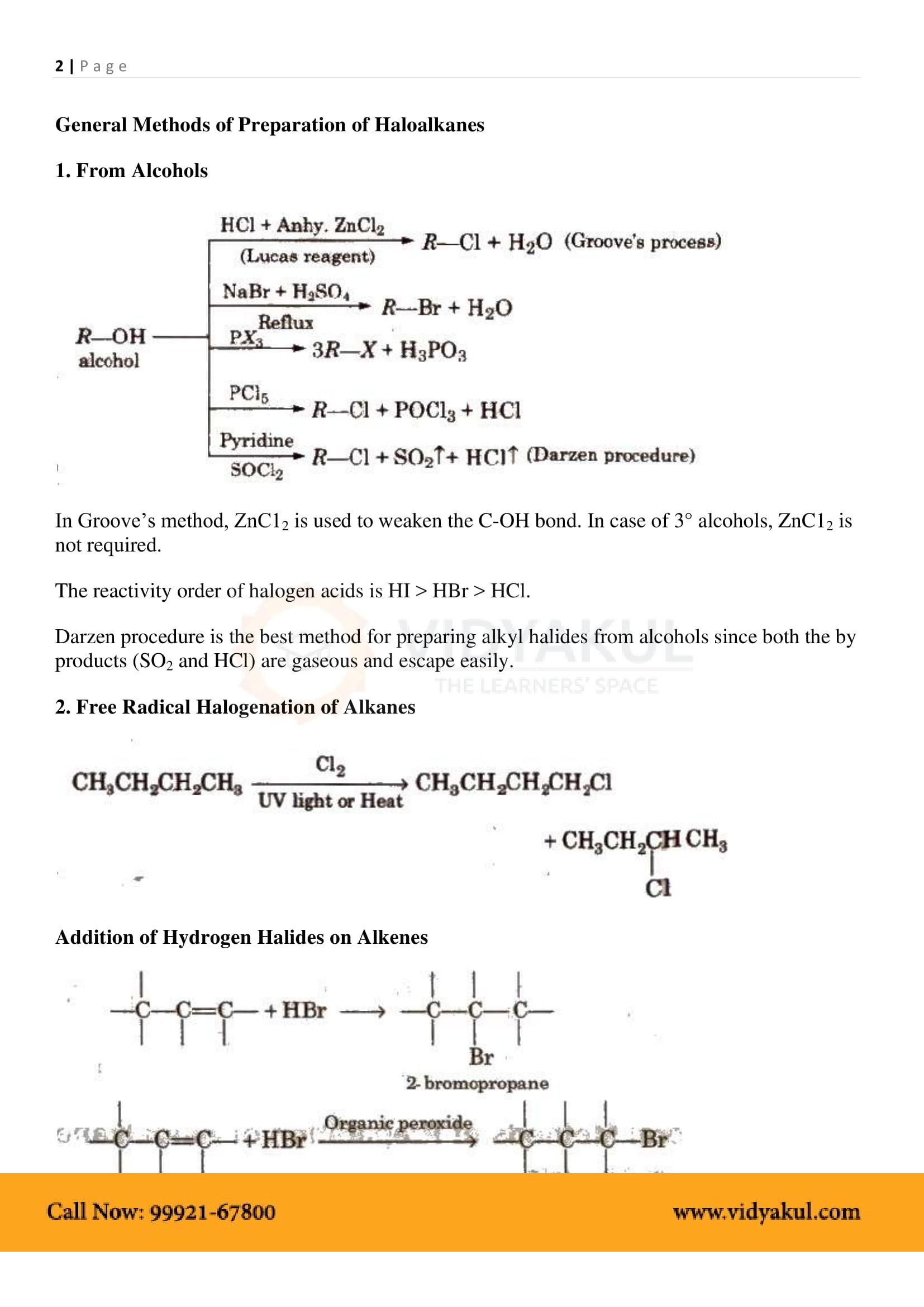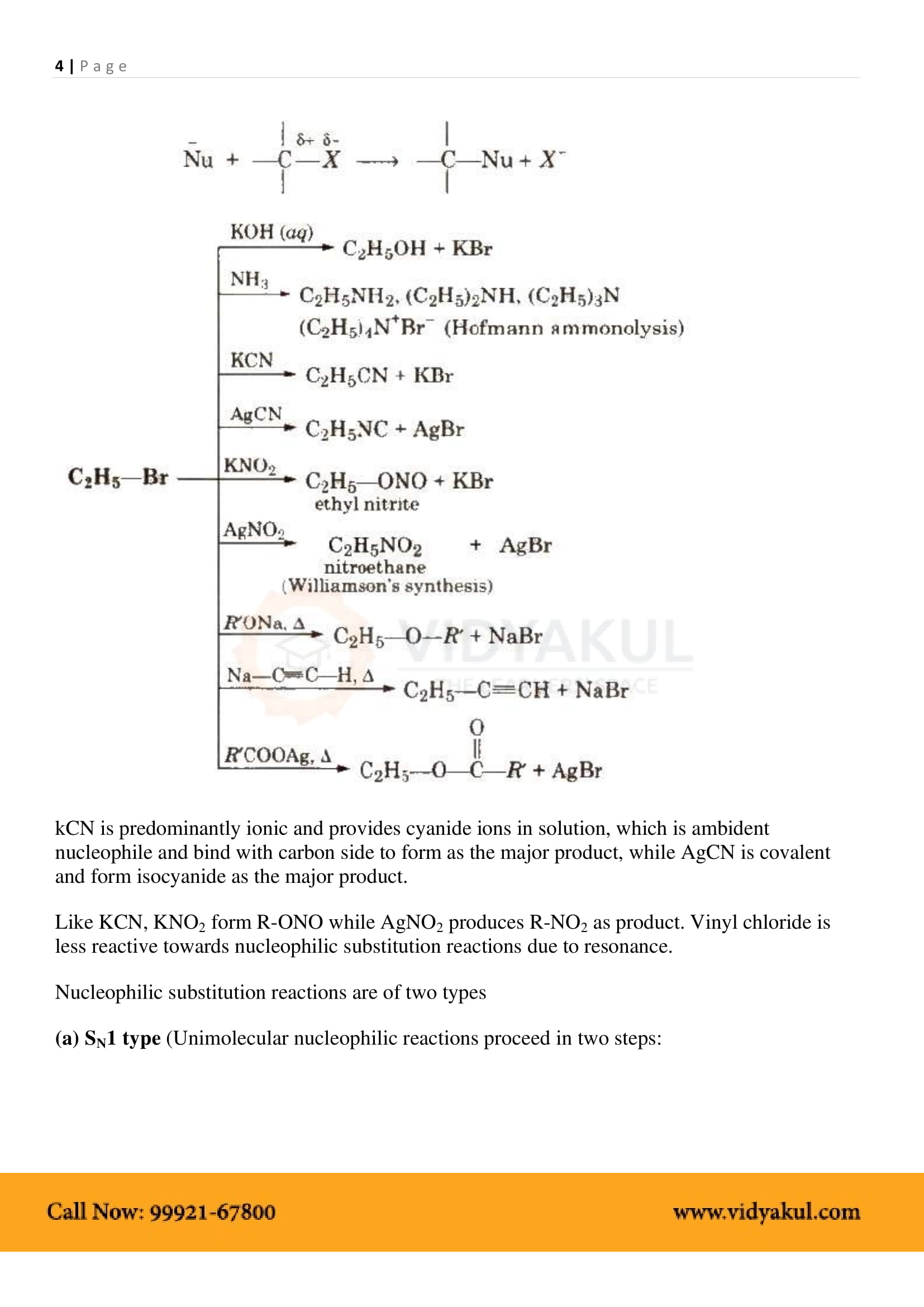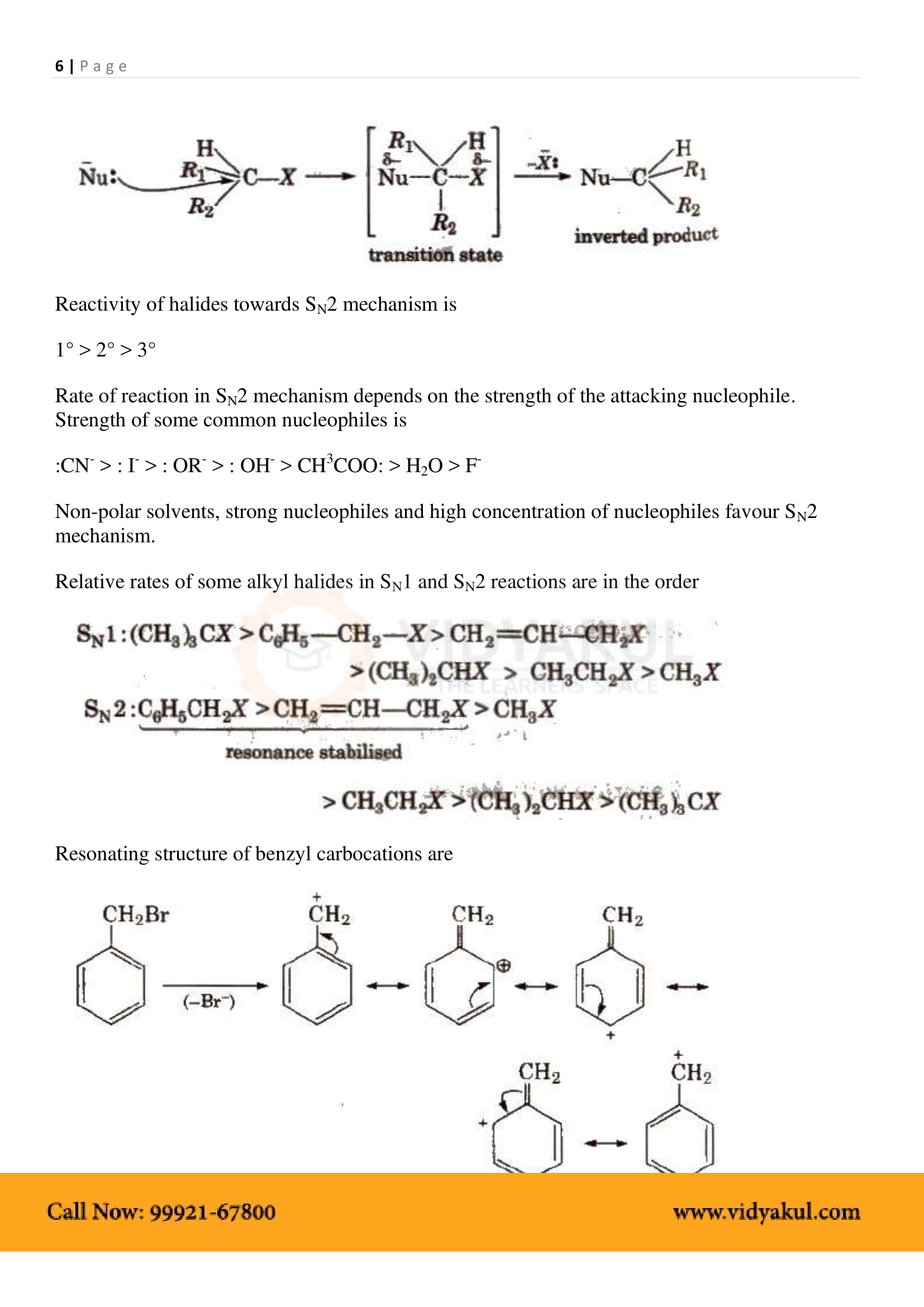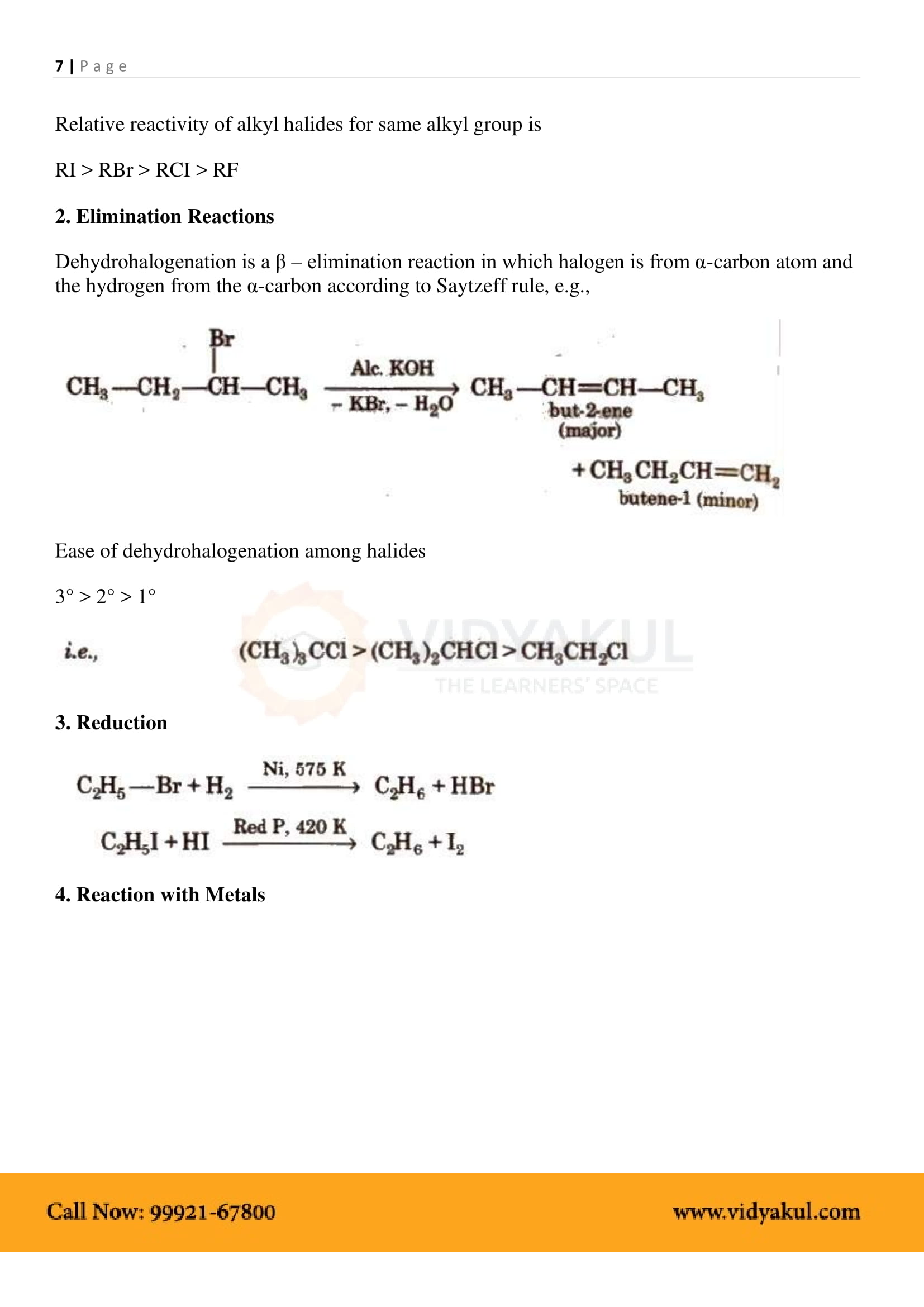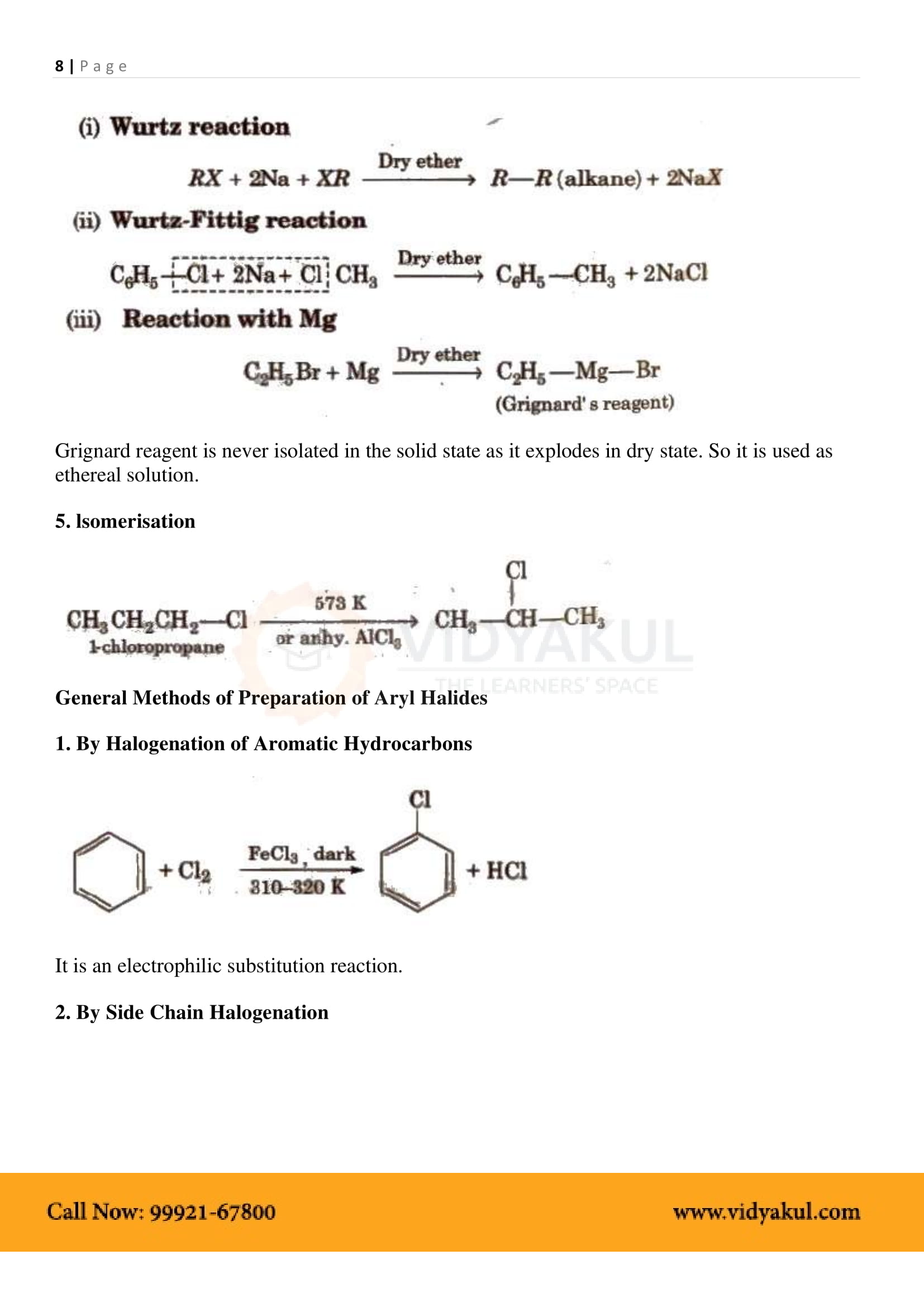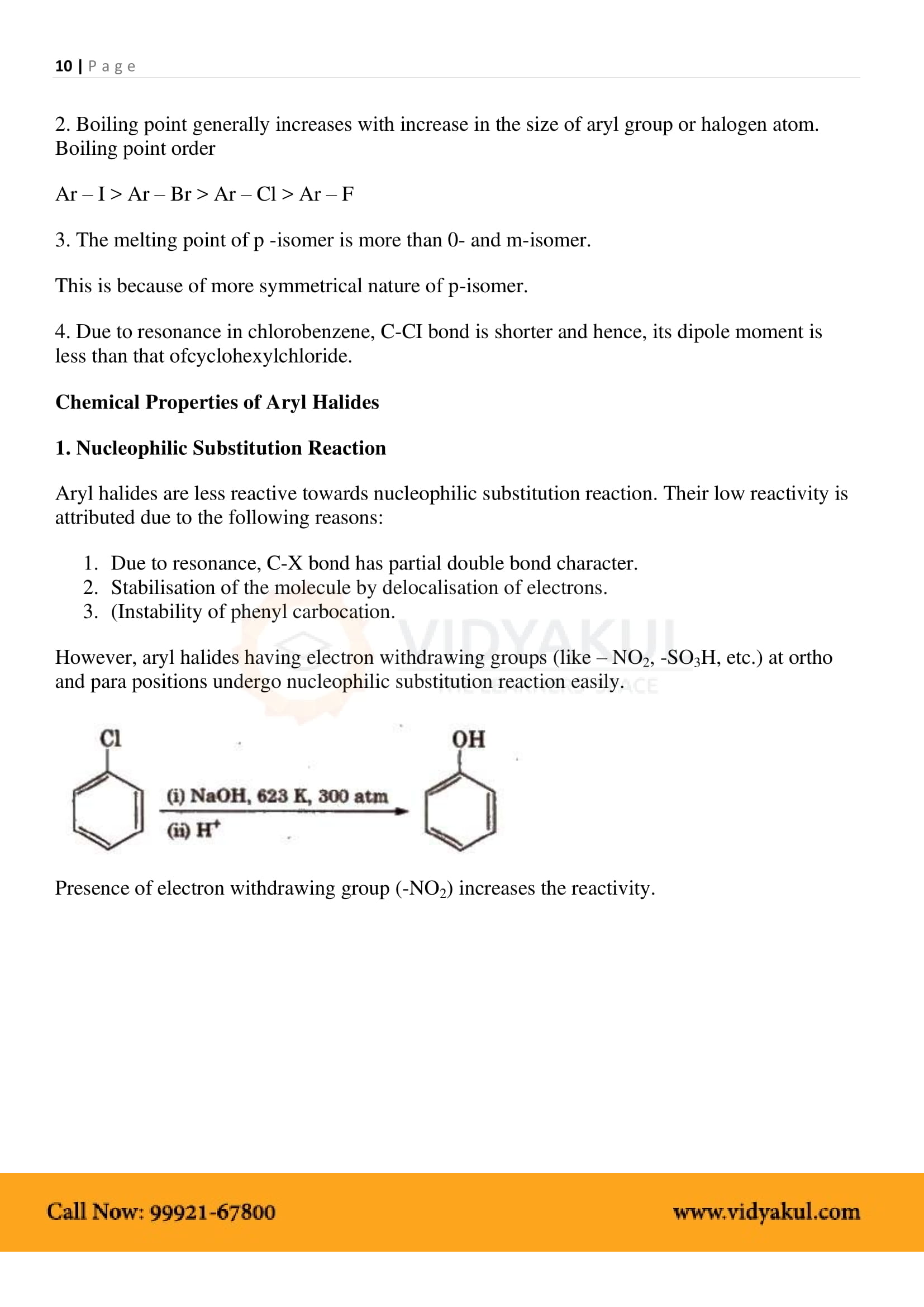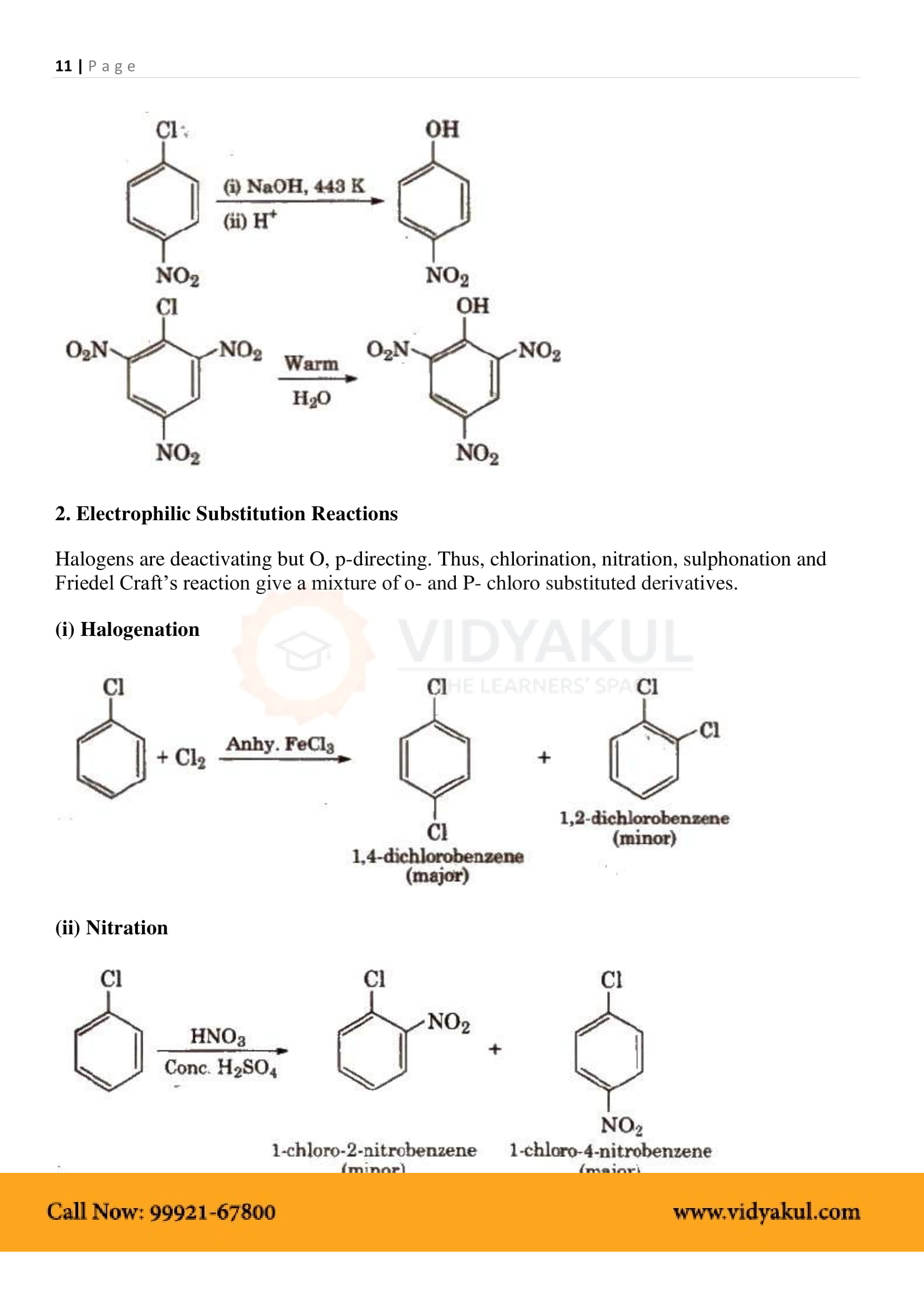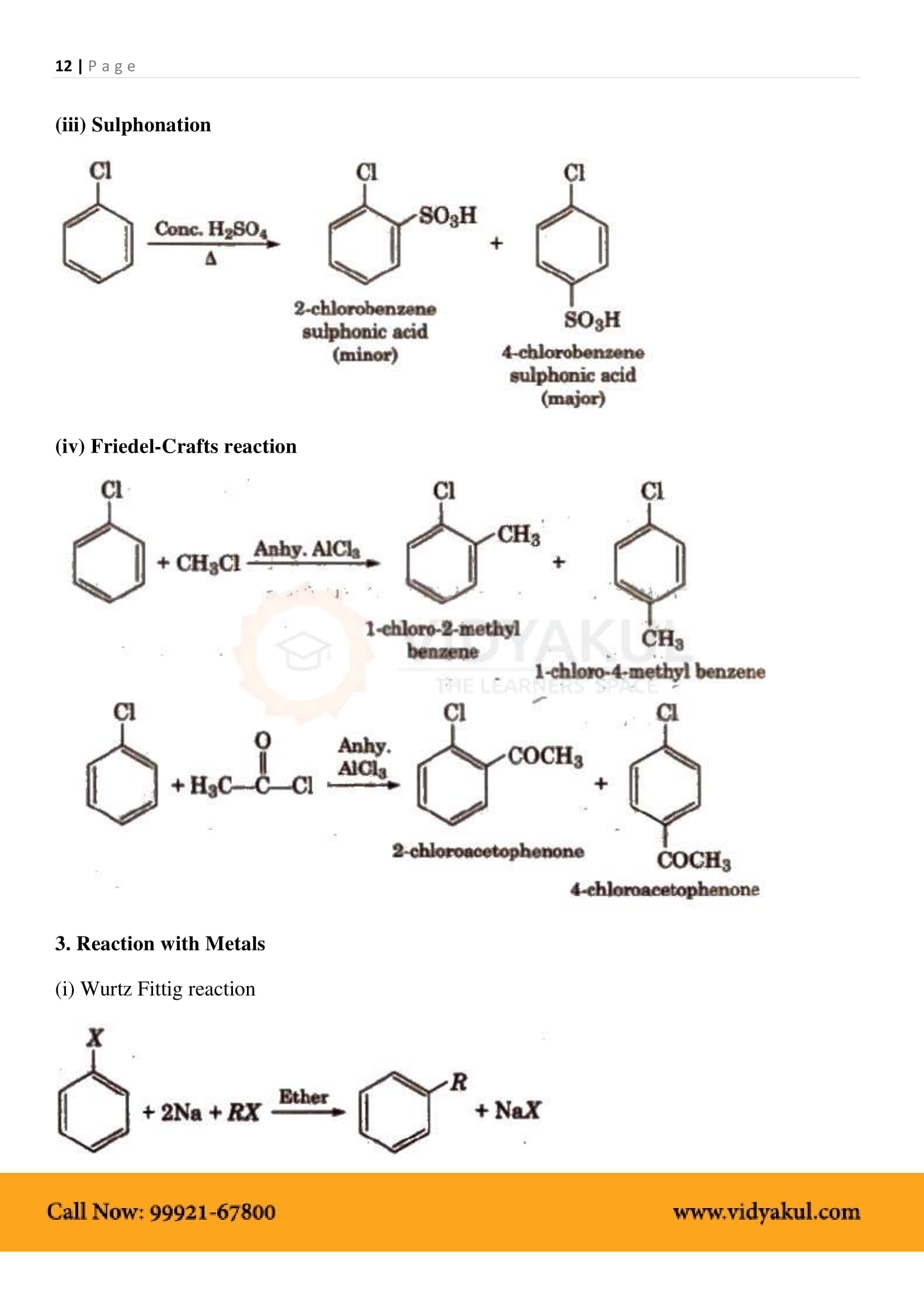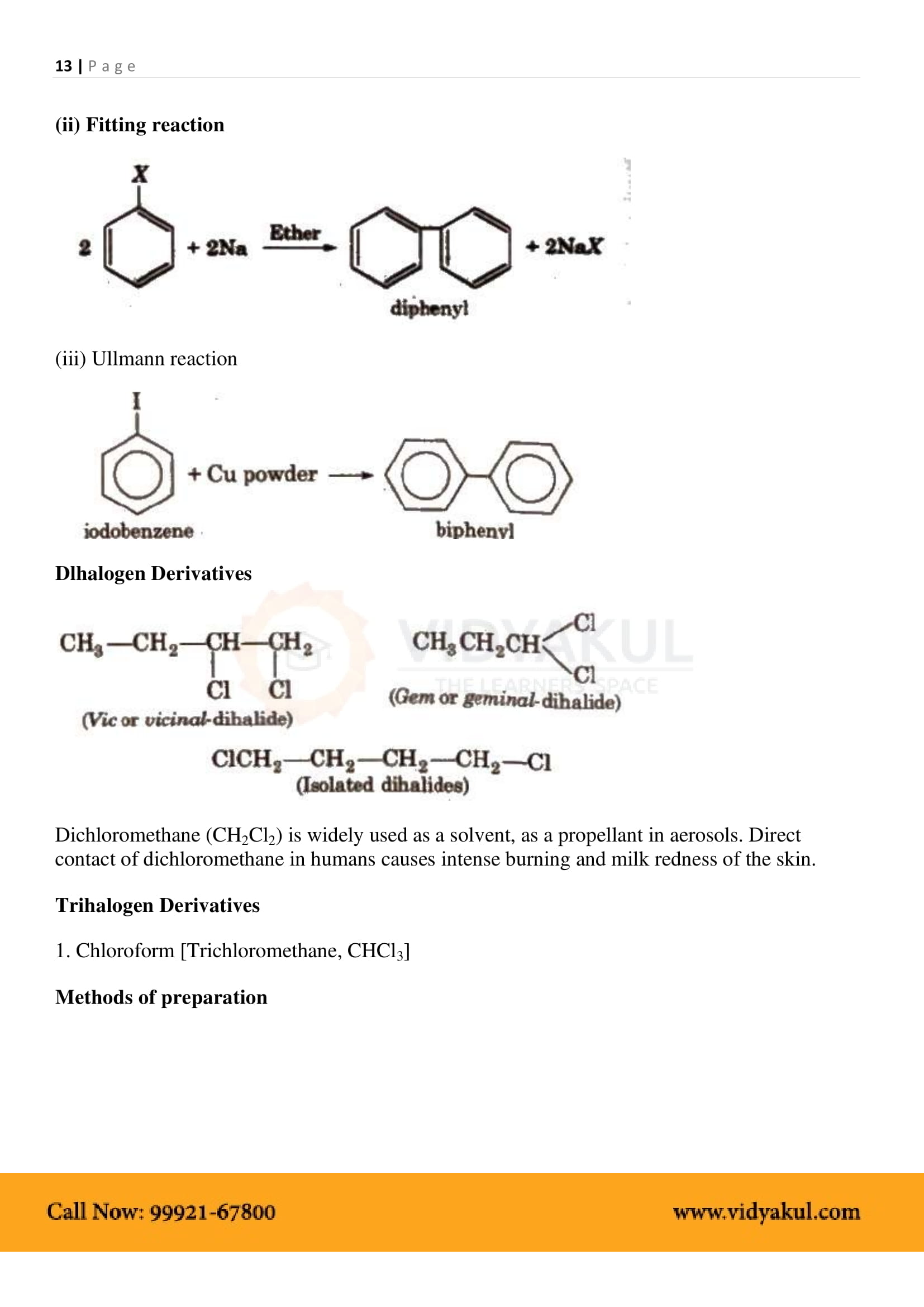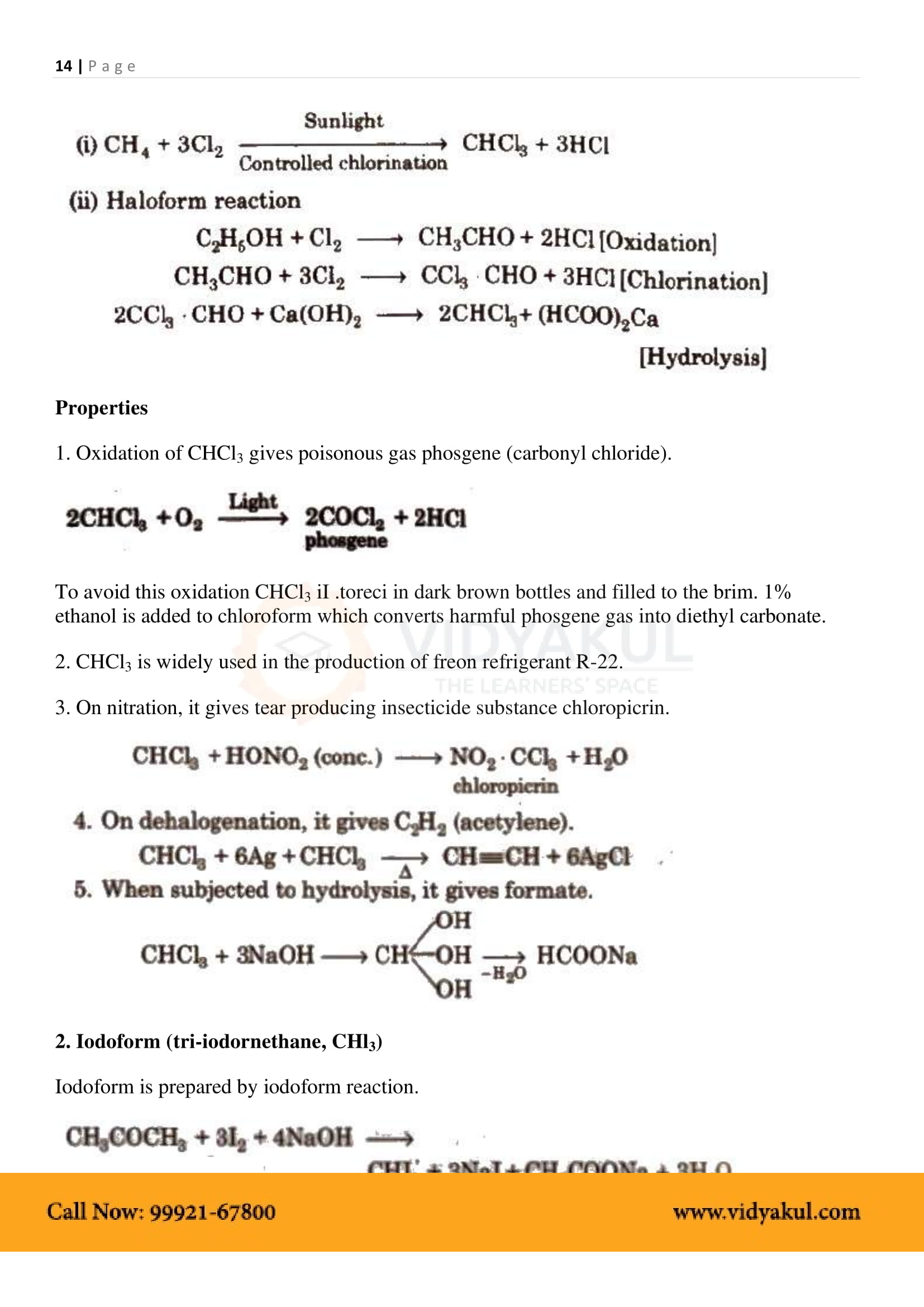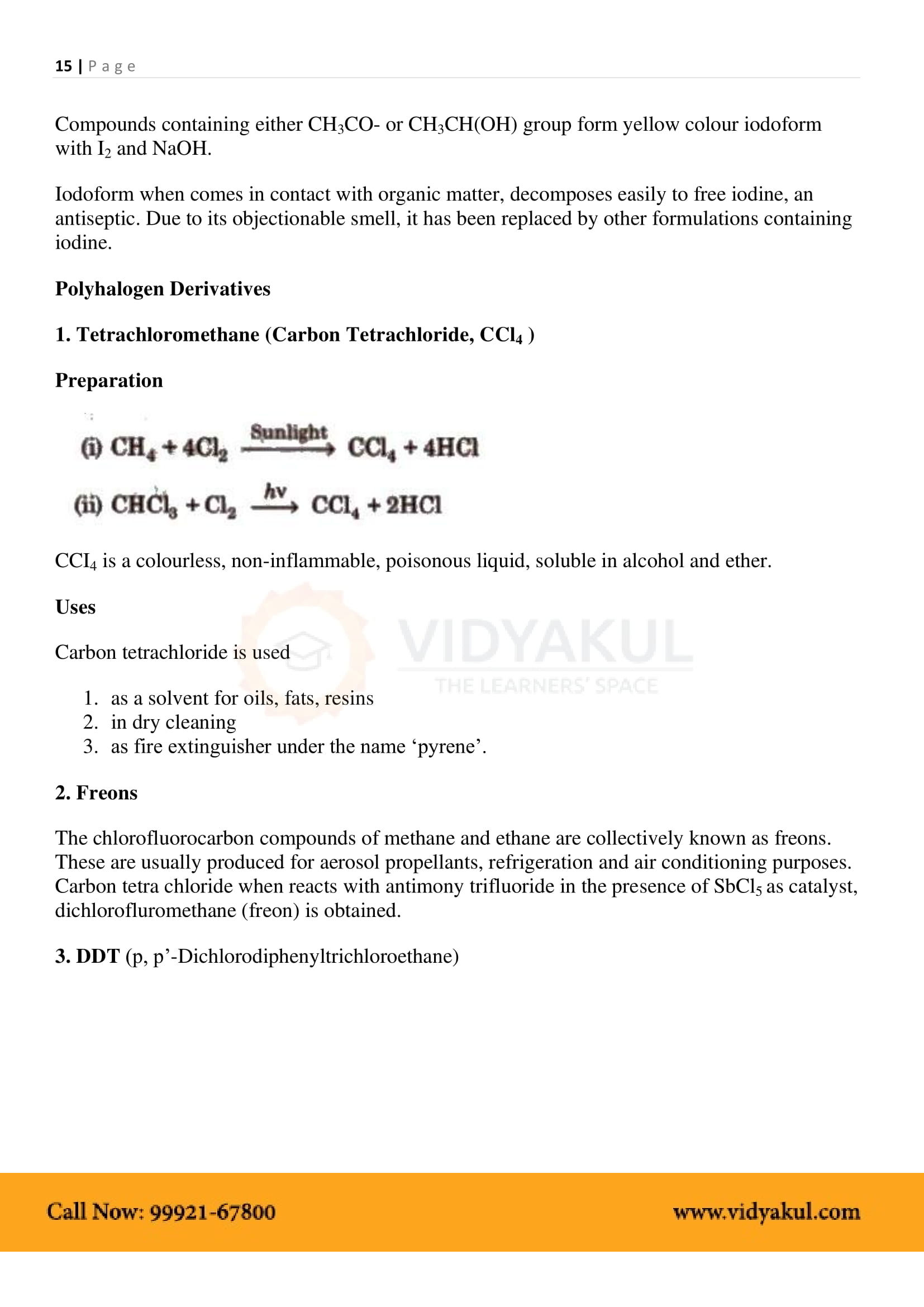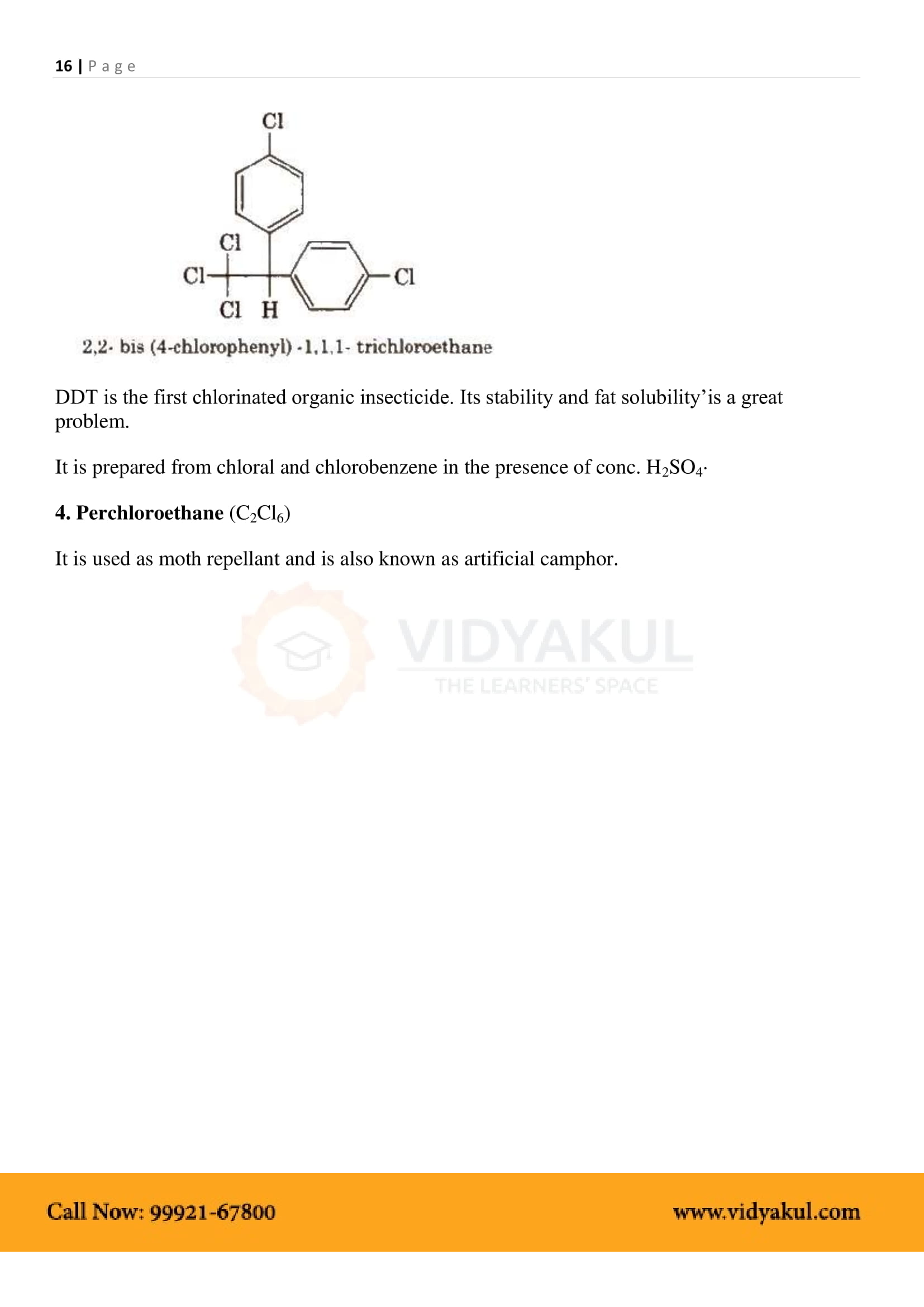Haloalkanes and Haloarenes Class 12 Notes

Class 12 Chemistry Chapter 10 Haloalkanes and Haloarenes Notes- Pdf Download
Chapter 10 Haloalkanes and Haloarenes
Halogens and halogens are an important chapter in 12th-grade chemistry. The questions for this chapter presented in the NCERT chemistry textbook build students' conceptual knowledge and confidence. Vidyakul’s experts designed NCERT notes for Chapter 10 of Grade 12 Chemistry after selecting their questions and answers in this chapter.
CBSE CLASS 12th CHEMISTRY 10 NOTES
Points to Remember
Below we have provided some of the important points to remember for NCERT Class 12 Chemistry to ace your exam:
In water, haloalkanes are only very slightly soluble. They do, however, dissolve in organic solvents.
Aryl halides are much less reactive than haloalkanes in nucleophilic substitution reactions.
In the electrophilic substitution reaction of haloarenes, halogen is deactivating but o, p-directing.
The Elimination reaction occurs when two groups or atoms are attached to two adjacent carbon atoms, and multiple bonds form simultaneously between these carbon atoms.
When alkyl chlorides react with AgNO3, a white precipitate is formed that is soluble in alcoholic ammonium hydroxide.
When alkyl bromides react with AgNO3, they form a yellow precipitate that is only slightly soluble in alcoholic ammonium hydroxide.
When alkyl iodides react with AgNO3, a dirty yellow precipitate is formed that is insoluble in alcoholic ammonium hydroxide.
When plane polarised light passes through the solutions of certain compounds, it rotates. Such compounds are known as Optically Active compounds, and the phenomenon is known as Optical Activity.
Topics and Sub-Topics
At Vidyakul, we offer premium notes for Haloalkanes and Haloarenes Grade 12 Chapter 10. It teaches the common name of Alkyl Halide. Vidyakul notes help identify a number of haloalkanes and halogens according to the IUPAC nomenclature system. After learning these concepts, students can easily describe halogen and halogen preparation reactions.
Download this solution for FREE Download This PDF
Important Links:
Few Important Questions
What are the uses of ‘Aldehydes’?
Aldehydes are used in tanning, preserving, and embalming and as a germicide, fungicide, and insecticide for plants, vegetables, and the production of certain polymeric materials.
What is ‘Nucleophilic addition’?
A nucleophilic addition reaction is a chemical addition reaction in which a nucleophile forms a sigma bond with an electron-deficient species.
What is the valency of hydrogen?
Hydrogen has only one valence electron and can form only one bond with an atom that has an incomplete outer shell. Hence the valency of hydrogen is one.
Practice Questions
Write the IUPAC names of ClCH2C≡CCH2Br
Who has the highest dipole moment from the following?
CCl4 and CH2Cl2
Write the steps to convert Propene to propane-1-ol and Benzyl alcohol to 2-phenylethanoid acid.
Define ambident nucleophiles? Give an example and explain.
When n-butyl chloride is treated with alcoholic KOH, what is the result?

